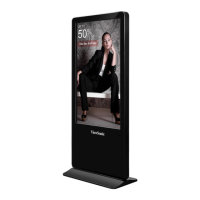
Do you have a question about the ViewSonic EP5540T and is the answer not in the manual?
| Package depth | 618 mm |
|---|---|
| Package width | 983 mm |
| Package height | 2016 mm |
| Package weight | 85000 g |
| RMS rated power | 20 W |
| Number of built-in speakers | 2 |
| DVI port | No |
| USB version | 2.0/3.2 Gen 1 (3.1 Gen 1) |
| USB ports quantity | 4 |
| Ethernet LAN (RJ-45) ports | 1 |
| Panel life | 30000 h |
| Response time | 6 ms |
| Display diagonal | 54.6 \ |
| Display brightness | 400 cd/m² |
| Display technology | LED |
| Native aspect ratio | 16:9 |
| LED backlighting type | Direct-LED |
| Contrast ratio (typical) | 1200:1 |
| Cables included | AC |
| Internal memory | 2 GB |
| Computer system type | System on Chip (SoC) |
| Internal storage capacity | 16 GB |
| Operating system installed | Android 5.0.1 |
| Purpose | Universal |
| Operating temperature (T-T) | 0 - 40 °C |
| Operating relative humidity (H-H) | 20 - 80 % |
| Product color | Black |
| Product design | Interactive flat panel |
| Placement supported | Indoor |
| Certification | FCC/cTUVus/BSMI |
| AC input voltage | 100-240 V |
| Power consumption (standby) | 0.5 W |
| Power consumption (typical) | 117 W |
| Depth | 450 mm |
|---|---|
| Width | 820 mm |
| Height | 1900 mm |
| Weight | 70000 g |
Device complies with Part 15 of FCC Rules, subject to two conditions for operation.
Device complies with Canadian RSS-210 for radio interference.
Device complies with Canadian RSS-210, for indoor operation and away from windows.
Device complies with R&TTE Directive, meeting specific conformance standards.
Lists components exempted from RoHS2 Directive, such as mercury in fluorescent lamps.
Contains critical warnings about product usage, electrical hazards, and proper handling.
Immediate actions required for specific damage or malfunction conditions.
Recommendations for optimal ergonomic benefits when using the display.
Information on how to register your product online or via CD-ROM.
Lists the items included in the product box for initial setup.
Instructions on how to physically mount or secure the digital poster.
Location of the remote sensor for receiving signals.
Identifies USB1, USB2, and RJ45 ports and their functions.
Details on connecting PCs, USB devices, and HDMI/DVI equipment.
Describes audio output, RS-232 serial control, and touch output connections.
Information on power connection, switch, and output specifications.
Explains the function of each button on the remote control.
Indicates that some functions can be controlled directly via touch on touch models.
Instructions for installing batteries and safety precautions for their use.
Guidance on pointing the remote control towards the sensor for proper operation.
Visual guide illustrating how to connect various devices like PCs, routers, and USB devices.
Steps for turning on the display and the first-time setup menu.
Instructions for using the float menu features on touch-enabled models.
Details the functions available in the Home menu for touch pen operation.
How to access the desktop menu and navigate through its options.
Accessing settings for network, date, time, and language.
How to launch and navigate the file explorer interface.
Description of core functions like Exit, Theme, and Settings within the file manager.
How to select different storage locations within the file explorer.
Details on adding, searching, refreshing, cleaning, and managing files.
Tools for copying, cutting, deleting, and renaming files.
Introduction to the Dashboard, Campaign Manager, and Presentation Editor modules.
Understanding dashboard information and navigating to other modules.
Introduction to managing campaigns, schedules, and playlists.
How to change campaign names and edit playlists.
Instructions for duplicating existing playlists.
Steps for renaming and deleting playlists.
Editing and removing time slots for campaign playback.
How to add new time slots for campaign scheduling.
Procedure for adding additional playlists to a campaign.
How to add new presentations to a playlist.
Operations for renaming, copying, and removing presentations.
Adding video templates and configuring loop/mute settings.
How to adjust the playback duration for presentations.
Adding and configuring widget templates for content display.
Using Carousel for images/videos and importing PowerPoint presentations.
Configuring the RSS widget by setting the URL.
Customizing the appearance of the RSS feed display.
Configuring the Web Page widget by setting the URL.
Adding and using templates with image and text zones.
Customizing text content and its properties within a presentation.
How to preview presentations and save playlists for playback.
How to select players and create or join groups for synchronized content.
Guide on creating a sample campaign from Dashboard to Presentation.
How to navigate to system settings from the desktop menu.
Viewing device information and using the QR code for updates.
Steps for configuring wired network connections, IP settings, and proxy.
Instructions for setting up wireless network using a USB Wi-Fi dongle.
How to check for and initiate system updates.
Notification process when new firmware is detected and user prompt.
Monitoring download progress and initiating installation after download.
Steps for manual upgrade completion, including system reboot.
Detailed description of Picture, Screen, and Color temperature settings.
Explanation of Sound, Zoom, OverScan, and Image NR settings.
Configuration for Menu Timeout, Timers, Passwords, and Lock Keypad.
Settings for low power standby, auto play, and restoring defaults.
Steps to enable and configure Auto Play for media content.
Process of copying files from a USB drive to the ePoster's internal memory.
Instructions on removing the USB drive and the start of content playback.
Introduction to the USB media player interface and browsing options.
Controls for navigating and viewing photos, including zoom and information display.
Controls for music playback, including repeat modes and playlist.
Controls for movie playback, including seeking, AB repeat, and settings.
Details on supported file extensions, codecs, and resolutions for media playback.
Solutions for problems related to the remote control not operating.
Troubleshooting steps for issues like no picture, poor picture, or audio noise.
Solutions for general problems like inaccessible items or unresponsive buttons.
Technical specifications for display, pixels, dimensions, and connection terminals.
Environmental conditions for operation and storage, including atmospheric pressure.
Contact details and websites for technical support by region.
Details on what the warranty covers and what is excluded, including misuse and wear.
Procedure for getting service under warranty, including required information.
Limitations on implied warranties and exclusion of damages.
Specific warranty terms and exclusions for products sold in Mexico.
Process for obtaining service in Mexico and warranty limitations.
List of authorized service centers and their contact details within Mexico.
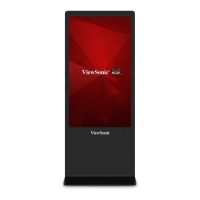
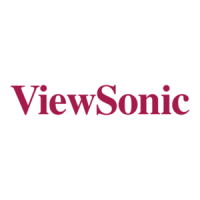
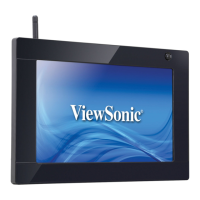
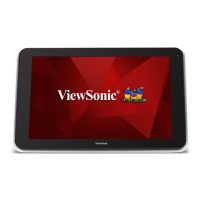
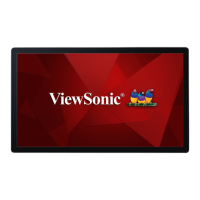


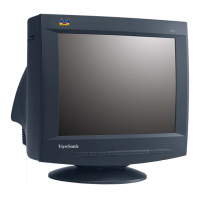

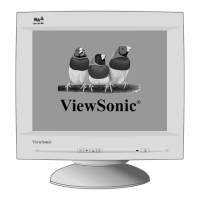


